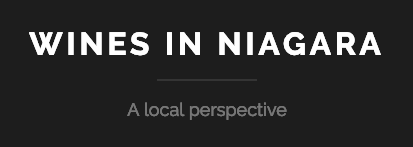By Wines in Niagara
It’s nearing last call for consumers to enjoy the 13% holiday tax break on VQA wines provincewide.
Check your favourite Ontario wineries as they race to the finish line where significant savings on your favourite wines have been enjoyed since Dec. 14. The last day to enjoy the savings is Feb. 15.
Meanwhile, in this Canadian wine report, the Wine Growers of Canada have renewed calls to allow the free flow of wine between provinces, and Cuvée 2025 is coming up this spring. We have all the details below.
WGC urges provinces to open up
borders to Canadian wine

Wine Growers Canada (WGC), the national association representing the Canadian wine industry, is renewed calls today for federal-provincial progress to tackle long-standing, archaic barriers to interprovincial trade.
In an increasingly unpredictable international trade environment due to the ongoing threat of U.S. tariffs, Canada must focus on reducing barriers within its own domestic market, including those which specifically prevent wine from being couriered from wineries in one province to consumers in another, WGC said in a news release.
Wine Growers Canada has been raising the issue at both the federal and provincial levels for two decades. Only Manitoba has fully opened its borders to interprovincial alcohol trade. British Columbia and Nova Scotia have opened their borders to 100% Canadian wine from licensed Canadian wineries, and on Jan. 6, British Columbia and Alberta launched a reciprocity agreement permitting winery-to consumer delivery between the two provinces.
In 2012, the federal government passed MP Dan Albas’s private member’s bill which amended the federal Importation of Intoxicating Liquors Act (1928), thus permitting Canadians to order wine from wineries in other provinces for personal use in accordance with provincial laws. However, years have passed and only 20% of the Canadian population in three provinces can order wine from any wine-producing province in Canada and have it delivered to their home.

Wine Growers Canada “has advocated tirelessly on behalf of Canadian wineries, especially small and medium-sized wineries, who have limited access to provincial liquor boards, and for which direct delivery sales are crucial to economic growth,” the news release said. “WGC has worked closely with both federal and provincial governments, testifying before the Senate Committee on Banking, Trade and Commerce, presenting to federal-provincial territorial ministers of agriculture, intervening in the R. vs. Comeau Supreme Court case (2017), and informed the Canada Free Trade Agreement’s Federal-Provincial-Territorial Alcoholic Beverages Working Group’s National Direct-to-Consumer model (2023).”
These efforts informed the recent bilateral agreement between the provinces of Alberta and British Columbia, which now stands as a working reciprocity model for the rest of Canada.
“We need to tear down these barriers that limit consumer choice and the growth of the Canadian wine industry, an industry of over 600 grape wineries and 1,900 grape growers,” said Dan Paszkowski, president and CEO of WGC.
“Our wineries attract 4.2 million tourist visitors every year, but for the vast majority of these visitors, it is still illegal to have their favourite wines from these wineries shipped to their out-of-province home. Today, on Canada’s Agriculture Day, the Canadian wine industry calls on all provincial premiers to launch the process of removing the interprovincial barriers for winery-to-consumer delivery.”
Ontario grape and wine
industry gears up for Cuvée

Returning to Niagara for its 35th year, Cuvée is a weekend-long celebration with proceeds supporting the future of the industry through grape and wine scholarships and research initiatives at Brock University.
Hosted by the University’s Cool Climate Oenology and Viticulture Institute (CCOVI), the event is centred on the grand tasting — the largest celebration of VQA wine of its kind — where industry professionals and wine enthusiasts will indulge in a curated selection of vintages from Ontario’s top winemakers.
The Grand Tasting takes place Saturday, May 24 at 7 p.m. at the Holiday Inn Hotel and Conference Centre in St. Catharines.
“We are proud to organize a unique and highly anticipated event that showcases true Ontario quality,” says CCOVI Director Debbie Inglis. “Ontario wines are among the best in the world, and our winemakers in attendance will unveil their personal favourites for guests to enjoy.”
Barb Tatarnic, who oversees the event, adds that while Cuvée has obvious appeal for wine lovers, it isn’t just for them.
Food enthusiasts will also experience a unique journey, with 10 live cooking stations featuring gourmet cuisine and elegant desserts that complement the evening’s wines, she says.

“We will have nearly 100 of the top wines from Ontario’s award-winning winemakers and some of the most delicious food pairings that our celebrated Niagara chefs can dream up. It’s a recipe for an unforgettable night,” Tatarnic says. “There is no better time than now to celebrate the Ontario wine and food scene. With Valentine’s Day around the corner, this would make the perfect gift for that special someone in your life.”
The night also features the Après Cuvée after party with live music and additional tastings of VQA wines as well as selections from local micro-breweries and cideries. “Guests can dance the night away with our live band, which will be announced soon, and enjoy a selection of local craft beer, ciders, sparkling wine and icewine,” says Tatarnic.
While the Grand Tasting is a Cuvée highlight, those looking to expand the celebration can participate in the Cuvée En Route Passport program, which runs from Friday, May 23 to Sunday, May 25.
With a Cuvée passport, guests can visit Niagara wineries and taste exclusive wines. The passport is included in the Grand Tasting ticket or can be purchased separately.
A special rate of $225 per Grand Tasting ticket is available until Tuesday, Feb. 18 using the promotional price ticket option on the Cuvée website. Ticket options are also available for groups of six to nine people or 10 and more.
Note: From information provided by industry partners








Comment here